1. What is Death Metal?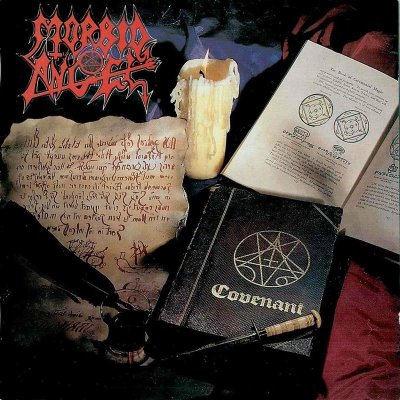
2. Who invented Death Metal and when?
3. Why do most Death Metal fans wear distinctive t-shirts?
4. How to understand Death Metal lyrics?
5. Why does Death Metal have such a morbid visual style?
6. Are Death Metal bands satanic or occultist?
7. Does Death Metal possess an ideology?
What is Death Metal?
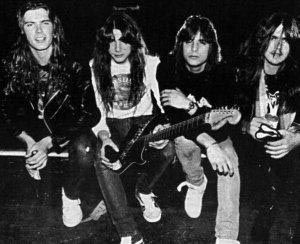 Death metal is structuralist heavy metal that borrows heavily from classical and industrial music. Its heritage is equal parts neoclassical heavy metal from the 1970s and hardcore punk from the early 1980s; if you throw Discharge, Judas Priest and King Crimson into a blender and set it on “high,” you might get something like death metal. It took from roughly 1983-1988 for death metal to fully evolve, and at that point, it experienced six golden years of fruitful growth before lapsing as black metal eclipsed it in popularity.
Death metal is structuralist heavy metal that borrows heavily from classical and industrial music. Its heritage is equal parts neoclassical heavy metal from the 1970s and hardcore punk from the early 1980s; if you throw Discharge, Judas Priest and King Crimson into a blender and set it on “high,” you might get something like death metal. It took from roughly 1983-1988 for death metal to fully evolve, and at that point, it experienced six golden years of fruitful growth before lapsing as black metal eclipsed it in popularity.
The original underground musical genre, death metal was completely unknown to most people until 1997 when it became fodder for mainstream commentary after several school shootings. During the 1980s and early 1990s, it was impossible to find death metal in normal record stores and chains; most people ordered it from small mailorder companies, or “distros,” that stocked underground metal exclusively. The underground in fact replicated every aspect of the normal music industry, including journalists and radio stations, to avoid being tainted by “commercial” or “mainstream” music.
We say death metal is “structuralist” because, in contrast to rock music, its goal is not a recursive rhythm riff that encourages constant intensity through verse-chorus structure; death metal, like black metal after it and prog rock and classical before it, uses “narrative” song structure, or a string of phrases connected in such a way that they effect musical and artistic change throughout the song. While rock music aims to find a sweet riff and ride it, and much of older heavy metal does the same, death metal is like opera: its goal is to use riffs to introduce more riffs, and through those, to create a treelike structure of motifs which resolve themselves to a final dominant theme. In this, death metal (like the progressive rock and synthpop bands that influenced it) is closer to classical music than rock music.
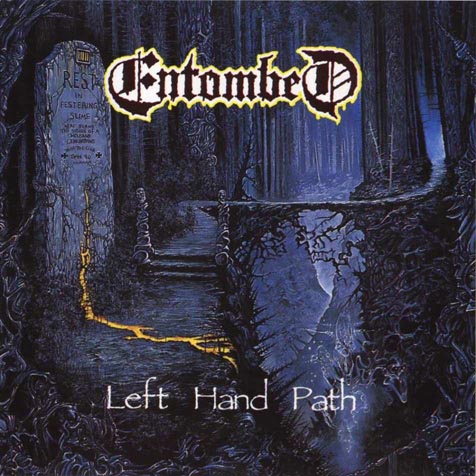 The history of rock music has been written by commercial promoters who have tried to establish its “authenticity” and uniqueness, and therefore, almost all mainstream publications are hostile to death metal. Death metal reminds us that rock music, blues and jazz did not arise autonomously in America, but were based on centuries of European popular music (the I-IV-V chord structure of the blues is derived from European folk music, and its “blues scale” is a modification of Asian and Celtic scales). Rock music is a scam, and its marketing makes it seem to be something greater than what it is, which is the same old music dressed up as a product. Death metal more than any genre before it broke from the rock tradition, and therefore is a threat to the rock establishment and its profits.
The history of rock music has been written by commercial promoters who have tried to establish its “authenticity” and uniqueness, and therefore, almost all mainstream publications are hostile to death metal. Death metal reminds us that rock music, blues and jazz did not arise autonomously in America, but were based on centuries of European popular music (the I-IV-V chord structure of the blues is derived from European folk music, and its “blues scale” is a modification of Asian and Celtic scales). Rock music is a scam, and its marketing makes it seem to be something greater than what it is, which is the same old music dressed up as a product. Death metal more than any genre before it broke from the rock tradition, and therefore is a threat to the rock establishment and its profits.
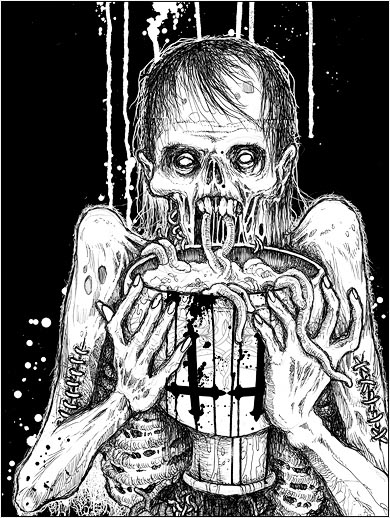 Like most musical genres in the modern time, death metal is constantly under assault not only from external interests, but from within, as self-interested people try to make rock music and dress it up as death metal. These attempts to simplify the genre would benefit those who attempt them, as they would both be able to make a saleable product (being similar to established musical tastes, it sells easily and broadly) and be able to claim the “authenticity” of belonging to an outsider form of art such as death metal. These false death metal bands have polluted the genre with the same mainstream dogma and musicality that death metal sought to escape. Like all human social breakdown, this breakdown occurs through the selfishness of individuals who are unwilling to admit that the health of the genre is more important than their personal profit.
Like most musical genres in the modern time, death metal is constantly under assault not only from external interests, but from within, as self-interested people try to make rock music and dress it up as death metal. These attempts to simplify the genre would benefit those who attempt them, as they would both be able to make a saleable product (being similar to established musical tastes, it sells easily and broadly) and be able to claim the “authenticity” of belonging to an outsider form of art such as death metal. These false death metal bands have polluted the genre with the same mainstream dogma and musicality that death metal sought to escape. Like all human social breakdown, this breakdown occurs through the selfishness of individuals who are unwilling to admit that the health of the genre is more important than their personal profit.
Death metal flourished from the mid-1980s to mid-1990s, and then was for most purposes replaced by black metal. Where death metal was structuralist with heavy emphasis on chromatic phrasing and hence rhythmic, black metal used narrative construction based on melody (an innovation of later and progressive death metal bands as well, such as At the Gates, Atheist, Gorguts and Demilich). As such, it is often hard to tell where death metal ended and black metal began, although in their mature form they are distinct genres. In this, and in the aesthetic components of death metal borrowed by mainstream bands as varied as Slipknot and Nirvana, death metal lives on.
References:
The History of Metal
Who invented Death Metal and when?
Death metal arose from the end of hardcore punk colliding with a desire to renew the spirit of metal; launched in 1969, proto-metal like Black Sabbath had become lost among hard rock (Led Zeppelin) and progressive rock (King Crimson) and needed redefining. The aggressive, oversimplified, and disconnected from contemporary music sound of hardcore punk was apt and therefore infused into heavy metal. In the process, because hardcore punk relied on streams of power chords or phrasal instead of rhythmic competition, metal became an entirely new animal.
This change can be heard first in speed metal bands like Metallica, Slayer, DBC, Rigor Mortis and Nuclear Assault. Phrases got longer, songs got more intricate, and the type of riffing that repeated a rhythm using a single chord got rarer; a new form of music was in the forging. However, these bands were still too entrenched in many of the rock-influenced tendencies of metal; death metal made a clean break from these. (It is interesting to note that the ultimate point of breakaway was thrash, or hardcore punk crossover bands who wrote punkish songs with metal riffs; these reduced music so much to its essence that it had to reconstruct itself, and having grand ambitions, reached toward narrative composition instead of the hackneyed rock styles.)
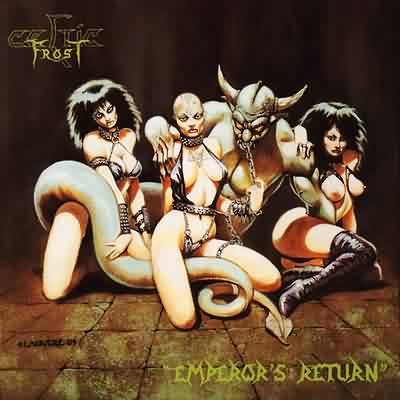 During the years 1983-1985, a style emerged that was between death metal, black metal and thrash, and from this all of the succeeding genres were to derive their musical inspiration. Bathory, Sodom, Hellhammer/Celtic Frost formed the basis of this style, augmented in the Americas by Possessed, Slayer and Sepultura. From these founding acts styles diversified into death and black metal. While many give credit to Venom for the term black metal, musically speaking they were rooted firmly in the heavy metal tradition.
During the years 1983-1985, a style emerged that was between death metal, black metal and thrash, and from this all of the succeeding genres were to derive their musical inspiration. Bathory, Sodom, Hellhammer/Celtic Frost formed the basis of this style, augmented in the Americas by Possessed, Slayer and Sepultura. From these founding acts styles diversified into death and black metal. While many give credit to Venom for the term black metal, musically speaking they were rooted firmly in the heavy metal tradition.
The golden years of death metal were from 1988 to 1994, during which time the classics of the genre and all of its variations formed. Percussive death metal thundered from the industrial east coast of America; Texas produced a harsh and grating otherworldly sound; Florida created the rhythmic and alienated Tampa style of death metal. Progressive bands from the USA and melodic bands from Sweden rounded out the style, as did innumerate hybrids, including doom metal and speed metal crossovers.
However, by 1994, the genre reached a decision point: where to go so as to keep up with black metal, which had expanded into melody as quickly as death metal had expanded into rhythmic structure, and now threatened to become more popular? The death metal genre had become calcified between diehards who insisted on a narrow definition of style, and “innovators” who wanted to make it into rock music, but both groups in their efforts to control external factors forgot internal factors, and the ideology and artistic spirit of death metal as lost. As such, it appeared senile and was forgotten for some years.
At the time of this writing, death metal is practiced by a few holdovers from the late 1980s who continue to put out quality music, but their numbers decline each year. The general health of the metal community is poor because it focuses on uniqueness of external appearance and not composition and artistic integrity. While we hold out hope for a death metal revival, it is more likely that it will simply take its place in history and we will be left with recordings.
References:
The History of Metal
Why do most Death Metal fans where distinctive t-shirts?
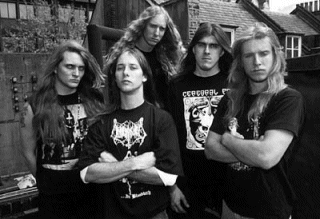
In the underground death metal subculture, the shirt you wear — bearing the logo of a favorite band or organization or concept — defines which strata of social accomplishment to which you belong within the death metal community. Your taste identifies your level within an intellectual hierarchy based on what its members are able to comprehend, or withstand, perhaps, musically.
For example, a guy in a Cannibal Corpse t-shirt might be neglected by someone wearing a Beherit t-shirt because Beherit has a more esoteric and theoretically-adventurous audience than the low-brow blockhead churning of Cannibal Corpse; t-shirts determine what bands your brain can accept and thus often, a type of caste identification within the hierarchy of fans. Those who try to forge this identity often find themselves answering difficult questions under unpleasant circumstances.
In the inverse situation, someone in an Atheist t-shirt might laugh off someone wearing a Sarcofago t-shirt as a philistine. This allows multiple communities to exist in a hierarchy within the death metal community and identify each other by sight, as well as differentiate metalheads from the hordes of drone normals who do nothing but buy Creed CDs and singing plastic fish.
How to understand Death Metal lyrics?
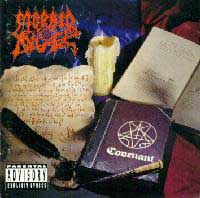
Death metal bands tend to use complex, Latinate language to describe the world in terms of its function and technologies, leaving the emotional terminology for rock music and blues. Its goal is not to affirm the emotions of the individual, but to point out the effects of structural change in the surrounding world. Not surprisingly, as a musical movement, death metal is also structuralist.
Unlike rock genres, there is a near total absence of gender words and love songs. Death metal is not about emotional escapism. Death metal is about reality.
Why does Death Metal have such a morbid visual style?
Symbols serve as an important anchor between the way a music sounds and what it represents aesthetically, including the ideas of the musicians as inspirational to their work. In death metal, there are several main categories of symbolism: the “occult,” the morbid, and the technological.
Death metal art — as seen on tshirts, album covers, flyers, patches, pins and stickers — includes all of these. The occult represents an opposition to morality; as a “nihilistic” genre, death metal musicians tend to be realists and recognize that no matter how much we classify something as morally bad or good, reality is unaffected, and whatever object is in question will serve reality at the level of function and not morality. The morbid represents another nihilistic outlook, which is that not only is death more real than our moralizations against it, but it will inevitably happen to us and we must be reminded by that. Where the occult uses pentagrams, ancient script, sigils and demonic imagery, the morbid uses disease, horror, submission and bodily corruption (including the mind/body turned against itself, as in zombie films) as its palette.
Technology makes an odd bedfellow with death metal art, as it is commonly used to modify one of the other two categories. Much as at the end of the Black Sabbath song “War Pigs,” Satan is shown as laughing and spreading his wings at the slaughter of young men for profit, technology is portrayed as amoral and therefore something that can turn on humanity at any minute. Combined with morbid imagery, we have art revealing human beings as both dependent on and captive of technology; combined with the occult, we have either technology in the power of the occult, or the occult as naturalistic and opposing technological humanity.
Art Death Metal bands satanic or occultist?
 Death metal bands are occultist in that each of the founding bands and most to follow had an occult focus or research interest evident in their lyrics. However, few practise mysticism and most seem to use it solely as metaphorology for their works. This is convenient because our moral society, even when secular, bases its morality on Judeo-Christian mythology.
Death metal bands are occultist in that each of the founding bands and most to follow had an occult focus or research interest evident in their lyrics. However, few practise mysticism and most seem to use it solely as metaphorology for their works. This is convenient because our moral society, even when secular, bases its morality on Judeo-Christian mythology.
Any academic study of occultism in death metal must also take into account the range of occults employed. Judeo-christian, Babylonian, Far East, Nordic and indigenous American symbolism and ideologies appear in the lyrics and conceptual positioning of death metal bands.
References:
Satanism as Metaphor in Metal Music
Does Death Metal possess an ideology?
When heavy metal evolved in response to the hippie culture around it, it took darker themes to a new intensity and warned of apocalypse. Fifteen years later, speed metal bands were wailing about Armageddon. But as Aldous Huxley’s Brave New World is different from George Orwell’s 1984, death metal had accepted that the apocalypse would be a whimper, and not a bang, and that its progress was inevitable.
This paranoid and soul-wrenching logic created an immediate need to overcome the superstition and self-pity of a complacent age. In consequence, as if approaching Nietzsche’s “abyss” and going under instead of over, these bands have embraced a philosophy of nihilism and a delight in the intellectual, sensual and spiritual extremes of a dying age.
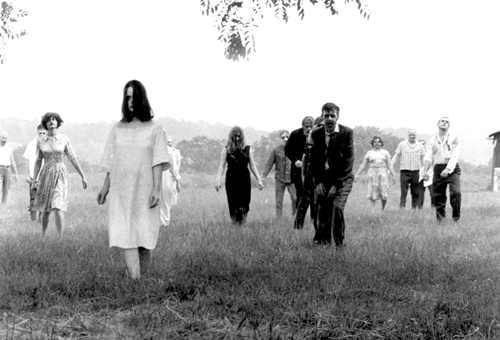 From this, much can be learned about a human future: nihilism frees us from much of our fear by confronting it head-on. Death metal bands have created an epic change in American subculture from one of morality to one of existential self-assertion, but further, the “gore” lyrics of many bands have targeted social denial of collective fear of death.
From this, much can be learned about a human future: nihilism frees us from much of our fear by confronting it head-on. Death metal bands have created an epic change in American subculture from one of morality to one of existential self-assertion, but further, the “gore” lyrics of many bands have targeted social denial of collective fear of death.
Ideology serves an important place in the generation of lyrics and concept to each band. for most, the personal is political in choice of music, intellectual aspirations within it, and values as expressed in themes of darkness, death, the occult, war, genocide and suffering. Death metal reflects a lineage to hardcore music, yet its heavy metal side shows in the use of the personal rather than collective as a means of communication.
That death metal has not collapsed on its own inertia, or become morality-driven and thus socially conformist like emocore or “life metal” bands, is a small miracle in a time of overwhelming commercial motivation to human efforts. Its underground remains strong and defiantly independent. As more people in society feel the need to withdraw from decaying mainstream values and behaviors, death metal’s ideology offers a glimpse of a nihilistic but impressively un-neurotic future.
References:
The Philosophical Tradition of Heavy Metal
Written by Vijay Prozak
2 CommentsTags: zine-zines
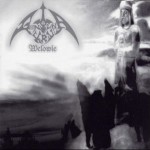


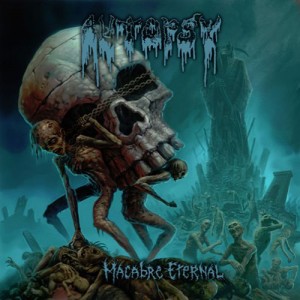
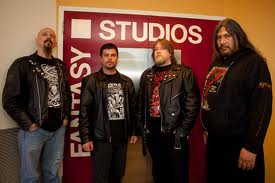 Chris Reifert is on top form as a vocalist. His ability to evoke majestic visions of dismemberment and perversion seem to contain a greater dynamic than usual, as to suggest that nearly fifteen years of prolonged absence has only allowed his strengths to re-accumulate.
Chris Reifert is on top form as a vocalist. His ability to evoke majestic visions of dismemberment and perversion seem to contain a greater dynamic than usual, as to suggest that nearly fifteen years of prolonged absence has only allowed his strengths to re-accumulate.
 Death metal is structuralist heavy metal that borrows heavily from classical and industrial music. Its heritage is equal parts neoclassical heavy metal from the 1970s and hardcore punk from the early 1980s; if you throw Discharge, Judas Priest and King Crimson into a blender and set it on “high,” you might get something like death metal. It took from roughly 1983-1988 for death metal to fully evolve, and at that point, it experienced six golden years of fruitful growth before lapsing as black metal eclipsed it in popularity.
Death metal is structuralist heavy metal that borrows heavily from classical and industrial music. Its heritage is equal parts neoclassical heavy metal from the 1970s and hardcore punk from the early 1980s; if you throw Discharge, Judas Priest and King Crimson into a blender and set it on “high,” you might get something like death metal. It took from roughly 1983-1988 for death metal to fully evolve, and at that point, it experienced six golden years of fruitful growth before lapsing as black metal eclipsed it in popularity. The history of rock music has been written by commercial promoters who have tried to establish its “authenticity” and uniqueness, and therefore, almost all mainstream publications are hostile to death metal. Death metal reminds us that rock music, blues and jazz did not arise autonomously in America, but were based on centuries of European popular music (the I-IV-V chord structure of the blues is derived from European folk music, and its “blues scale” is a modification of Asian and Celtic scales). Rock music is a scam, and its marketing makes it seem to be something greater than what it is, which is the same old music dressed up as a product. Death metal more than any genre before it broke from the rock tradition, and therefore is a threat to the rock establishment and its profits.
The history of rock music has been written by commercial promoters who have tried to establish its “authenticity” and uniqueness, and therefore, almost all mainstream publications are hostile to death metal. Death metal reminds us that rock music, blues and jazz did not arise autonomously in America, but were based on centuries of European popular music (the I-IV-V chord structure of the blues is derived from European folk music, and its “blues scale” is a modification of Asian and Celtic scales). Rock music is a scam, and its marketing makes it seem to be something greater than what it is, which is the same old music dressed up as a product. Death metal more than any genre before it broke from the rock tradition, and therefore is a threat to the rock establishment and its profits. Like most musical genres in the modern time, death metal is constantly under assault not only from external interests, but from within, as self-interested people try to make rock music and dress it up as death metal. These attempts to simplify the genre would benefit those who attempt them, as they would both be able to make a saleable product (being similar to established musical tastes, it sells easily and broadly) and be able to claim the “authenticity” of belonging to an outsider form of art such as death metal. These false death metal bands have polluted the genre with the same mainstream dogma and musicality that death metal sought to escape. Like all human social breakdown, this breakdown occurs through the selfishness of individuals who are unwilling to admit that the health of the genre is more important than their personal profit.
Like most musical genres in the modern time, death metal is constantly under assault not only from external interests, but from within, as self-interested people try to make rock music and dress it up as death metal. These attempts to simplify the genre would benefit those who attempt them, as they would both be able to make a saleable product (being similar to established musical tastes, it sells easily and broadly) and be able to claim the “authenticity” of belonging to an outsider form of art such as death metal. These false death metal bands have polluted the genre with the same mainstream dogma and musicality that death metal sought to escape. Like all human social breakdown, this breakdown occurs through the selfishness of individuals who are unwilling to admit that the health of the genre is more important than their personal profit. During the years 1983-1985, a style emerged that was between death metal, black metal and thrash, and from this all of the succeeding genres were to derive their musical inspiration. Bathory, Sodom, Hellhammer/Celtic Frost formed the basis of this style, augmented in the Americas by Possessed, Slayer and Sepultura. From these founding acts styles diversified into death and black metal. While many give credit to Venom for the term black metal, musically speaking they were rooted firmly in the heavy metal tradition.
During the years 1983-1985, a style emerged that was between death metal, black metal and thrash, and from this all of the succeeding genres were to derive their musical inspiration. Bathory, Sodom, Hellhammer/Celtic Frost formed the basis of this style, augmented in the Americas by Possessed, Slayer and Sepultura. From these founding acts styles diversified into death and black metal. While many give credit to Venom for the term black metal, musically speaking they were rooted firmly in the heavy metal tradition.

 Death metal bands are occultist in that each of the founding bands and most to follow had an occult focus or research interest evident in their lyrics. However, few practise mysticism and most seem to use it solely as metaphorology for their works. This is convenient because our moral society, even when secular, bases its morality on Judeo-Christian mythology.
Death metal bands are occultist in that each of the founding bands and most to follow had an occult focus or research interest evident in their lyrics. However, few practise mysticism and most seem to use it solely as metaphorology for their works. This is convenient because our moral society, even when secular, bases its morality on Judeo-Christian mythology. From this, much can be learned about a human future: nihilism frees us from much of our fear by confronting it head-on. Death metal bands have created an epic change in American subculture from one of morality to one of existential self-assertion, but further, the “gore” lyrics of many bands have targeted social denial of collective fear of death.
From this, much can be learned about a human future: nihilism frees us from much of our fear by confronting it head-on. Death metal bands have created an epic change in American subculture from one of morality to one of existential self-assertion, but further, the “gore” lyrics of many bands have targeted social denial of collective fear of death.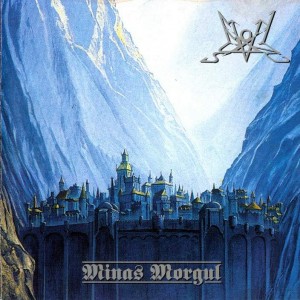
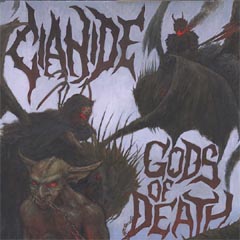 We who still love metal walk a fine line between the sold out nu-hardcore stylings of metalcore, and the tendency to hop on the bandwagon of the old school too much; the previous Cianide, Hell’s Rebirth, walked too far on the old school side — when a band loses direction, they imitate successful techniques and patterns from the past without knowing what those patterns evoked in the listeners.
We who still love metal walk a fine line between the sold out nu-hardcore stylings of metalcore, and the tendency to hop on the bandwagon of the old school too much; the previous Cianide, Hell’s Rebirth, walked too far on the old school side — when a band loses direction, they imitate successful techniques and patterns from the past without knowing what those patterns evoked in the listeners.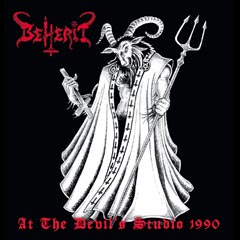 I am really glad this recording is not the final form these songs took, but I am equally glad to be able to hear them in this form. Most people will compare this to The Oath of Black Blood, but it reminds me more of the later EPs, although it’s in the style of The Oath of Black Blood.
I am really glad this recording is not the final form these songs took, but I am equally glad to be able to hear them in this form. Most people will compare this to The Oath of Black Blood, but it reminds me more of the later EPs, although it’s in the style of The Oath of Black Blood.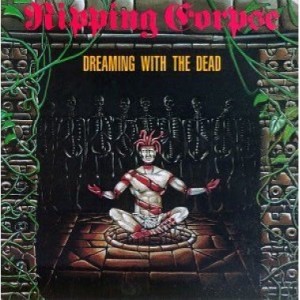
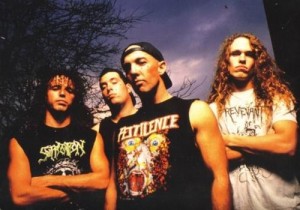 Although the adverse effect of retaining such past influences would be that some later songs still structure themselves around anthemic choruses – a burden that most of Ripping Corpse’s contemporaries had already evolved far beyond – the band manages to employ enough compexity in their compositions to keep up with the demands of their vision. The sound of the guitars may be construed as being weak or mixed poorly, but this lighter texture lends itself well to the progression of riffs from measured punctuations of rhythm to insane variations by way of fucked up artificial harmonics and blastbeaten tremolo sequences. Tempo blurs the lines of what is considered primitive, though the act may be embellished with the jewels of modern society or justified in the name of some ideology. As layers of humanity are removed from the conscious mind, lead guitars erratically and uncontrollably rip through passages and bring a microcosmic level of culmination within a song, like the fleeting screams of demons being exorcised from a long tortured soul.
Although the adverse effect of retaining such past influences would be that some later songs still structure themselves around anthemic choruses – a burden that most of Ripping Corpse’s contemporaries had already evolved far beyond – the band manages to employ enough compexity in their compositions to keep up with the demands of their vision. The sound of the guitars may be construed as being weak or mixed poorly, but this lighter texture lends itself well to the progression of riffs from measured punctuations of rhythm to insane variations by way of fucked up artificial harmonics and blastbeaten tremolo sequences. Tempo blurs the lines of what is considered primitive, though the act may be embellished with the jewels of modern society or justified in the name of some ideology. As layers of humanity are removed from the conscious mind, lead guitars erratically and uncontrollably rip through passages and bring a microcosmic level of culmination within a song, like the fleeting screams of demons being exorcised from a long tortured soul.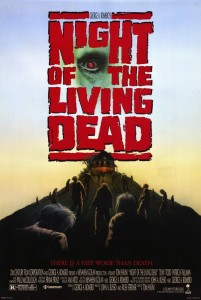
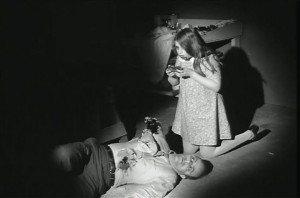
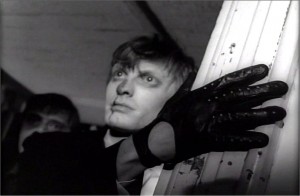

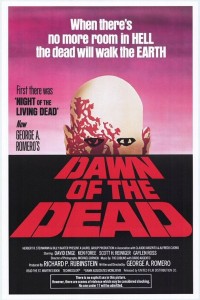

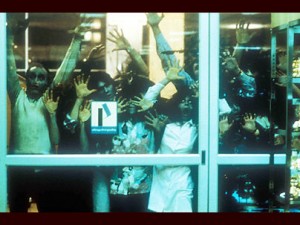
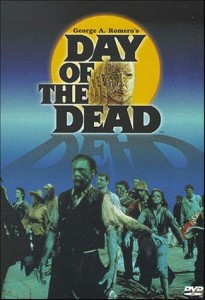
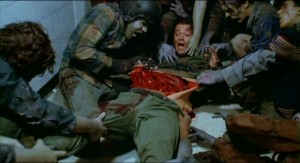
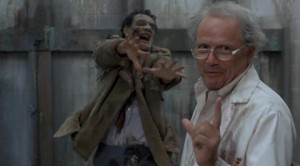
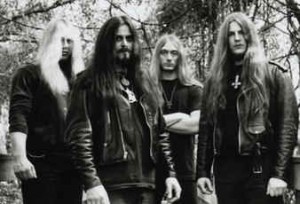 It is often asserted that some of the best works of the death metal genre arose as if by accident. A better assertion is that by the early 1990′s, many artists prominent within this musical form found themselves at a level of impassable momentum; a culmination of instrumental violence, a taste for profound and subversive ideals and a sadistic will to power. The year 1992 found death metal at its most potent, chaotic, destructive and virile, just as speed metal was in ’86, and black metal in ’93. Legion sets itself in a league of its own, giving each musician a distinct elemental voice. Glen Benton’s cthonian barking is at its most virulent and savage, guttural yet dynamic, having a rhythmic cohesion that is comparable to that of David Vincent, but separable in tonality. His bass playing is clearly audible, sandwiched in between the juxtaposition of the trebly guitars, which are thankfully never distant or uninterpretable. The drumming of Steve Asheim is insanely over the top yet disciplined, as if one were battering cakes laced with grenades. The musical influence of Slayer is the clear template for Deicide’s work, and in terms of compact intensity, Legion is to their self titled debut what Reign In Blood was to Hell Awaits. A parallel can also be drawn to Slayer in the musical interplay in the dissonant soloing techniques that see the best ideas of Hanneman and King taken towards a polyphonic atonality. The album radiates just under half an hour of pure blasphemous momentum, and communicates through spiraling, chopping guitar riffs that sit in perfectly with a multi-faceted rhythm section. Structurally Legion emphasizes a highly proficient musical backdrop, which advances what was exhibited on their debut and compresses it into a greater density that is both a pleasure to listen to and gives Deicide a platform on which to construct their most unique and standout work. Virtuosity echoes the best work of Atheist and Voivod if the melodic and progressive rock tendencies were eschewed, whilst the pattern language and aesthetic is in league with the best work of Morbid Angel, Sepultura, Massacra and Suffocation. This is Deicide’s pinnacle, one they would never surpass. A fundamental cornerstone of death metal, one of the all time best.
It is often asserted that some of the best works of the death metal genre arose as if by accident. A better assertion is that by the early 1990′s, many artists prominent within this musical form found themselves at a level of impassable momentum; a culmination of instrumental violence, a taste for profound and subversive ideals and a sadistic will to power. The year 1992 found death metal at its most potent, chaotic, destructive and virile, just as speed metal was in ’86, and black metal in ’93. Legion sets itself in a league of its own, giving each musician a distinct elemental voice. Glen Benton’s cthonian barking is at its most virulent and savage, guttural yet dynamic, having a rhythmic cohesion that is comparable to that of David Vincent, but separable in tonality. His bass playing is clearly audible, sandwiched in between the juxtaposition of the trebly guitars, which are thankfully never distant or uninterpretable. The drumming of Steve Asheim is insanely over the top yet disciplined, as if one were battering cakes laced with grenades. The musical influence of Slayer is the clear template for Deicide’s work, and in terms of compact intensity, Legion is to their self titled debut what Reign In Blood was to Hell Awaits. A parallel can also be drawn to Slayer in the musical interplay in the dissonant soloing techniques that see the best ideas of Hanneman and King taken towards a polyphonic atonality. The album radiates just under half an hour of pure blasphemous momentum, and communicates through spiraling, chopping guitar riffs that sit in perfectly with a multi-faceted rhythm section. Structurally Legion emphasizes a highly proficient musical backdrop, which advances what was exhibited on their debut and compresses it into a greater density that is both a pleasure to listen to and gives Deicide a platform on which to construct their most unique and standout work. Virtuosity echoes the best work of Atheist and Voivod if the melodic and progressive rock tendencies were eschewed, whilst the pattern language and aesthetic is in league with the best work of Morbid Angel, Sepultura, Massacra and Suffocation. This is Deicide’s pinnacle, one they would never surpass. A fundamental cornerstone of death metal, one of the all time best.
